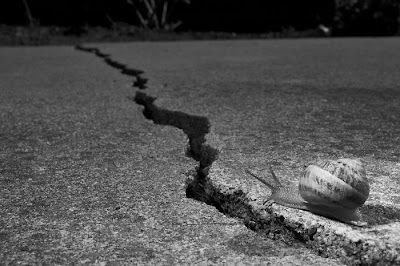The first sequence involved each shooter getting 15 minutes to shoot women beach volleyball players in action. Surprisely, I enjoyed the volleyball shoot sequence way more than the rest of the show and I really gave the replay button on my remote a lot of use (no, not to replay the volleyball players in slow motion!). I found it SUPER interesting to see how each of the contestants approached the shoot based on their backgrounds. The wedding photographer tried to find a unique view, Dean (the resident Strobist-style hardware guy) had a PW on his camera and a guy holding a flash for fill, the rock band photographer planted herself like a ficus, and the model-crazed black guy just focused on their rear ends...
The main reason I kept rewatching segments was to see where and how the contestants were shooting, and try to get an idea of how assistants were put in play too (each contestant seemed to have at least one
The second sequence involved a 3-D camera, which when I saw the description on my PVR, completely went over my head. But when I saw that array of cameras set up to do bullet-time (well, a 3-D photograph) I couldn't help but grin. Gotta love all that hardware! Aside: some of my friends were involved with the Stanford Multi-Camera Array, but those cameras didn't have nearly the resolution of a dSLR.
But, in the end, what the contestants did (and what they were allowed to do) was quite disappointing, amounting to just asking the models to jump on trampolines and fire off random images. Given more time (on the order of days) and the ability to plan the shot, change the set, and modify the camera orientations, you could get some awesome results. As it was, they were tasked with shooting hair but I thought the cameras were way too far away from the models to make an effective shot.
Sadly, I am also starting to get sucked into the reality part of the reality show (the contestants). Mostly, I'm pulling for Marie, which is odd, because I don't think she is as talented as some of the other shooters, but she seems the least warped (if I have to hear the phrase hair dance one more time in my life, I'll be driven to murder!). So, yeah, the show has pulled me in, although I suspect it hasn't done too well with the general public. I wouldn't be surprised if it was cancelled after this season, although I'm sure it is dirt-cheap to produce (especially since it is light on writers).
Now, to the comments. From Mr. Anonymous:
dumbest show ever!! FInd me photographers who want to work in teams...isn't being an artist not about being unique?? Sad very sad dumb cheap american brainlessness!While I don't agree with a lot of it, he's got a point. The teamwork aspect of the show is kind of lame and just a thinly disguised way to increase tension and make the eliminations more dramatic. After all, how many photographers work in teams? Well, probably all of the good ones, but there's only one photographer in most cases, the rest are assistants. Hence the tension.
But Mr. Anonymous wasn't done yet. He REALLY doesn't like The Shot, so he then went back for more three minutes later with character assassination of Nigel Barker (who? I have no idea who that guy is, but I also can't remember the name of that long-hair dude that runs the show). Mr. A. did have a point later on:
The show is beyond rediculous! Hanging on a rope shooting a professional shot within 10 minutes??? why not standing on the ground shooting the guy with a long lens??This is a good point. Nobody would ever expect to make a really good shot in 10 minutes, but it is a reality show, after all. Can't expect them to give every contestant a day and 5 assistants to get their shot. I do hope, later on in the show, they give the contestants more time and resources.
Anyway, for now, I'll keep watching. But don't worry, I'm not going to review every episode!












































